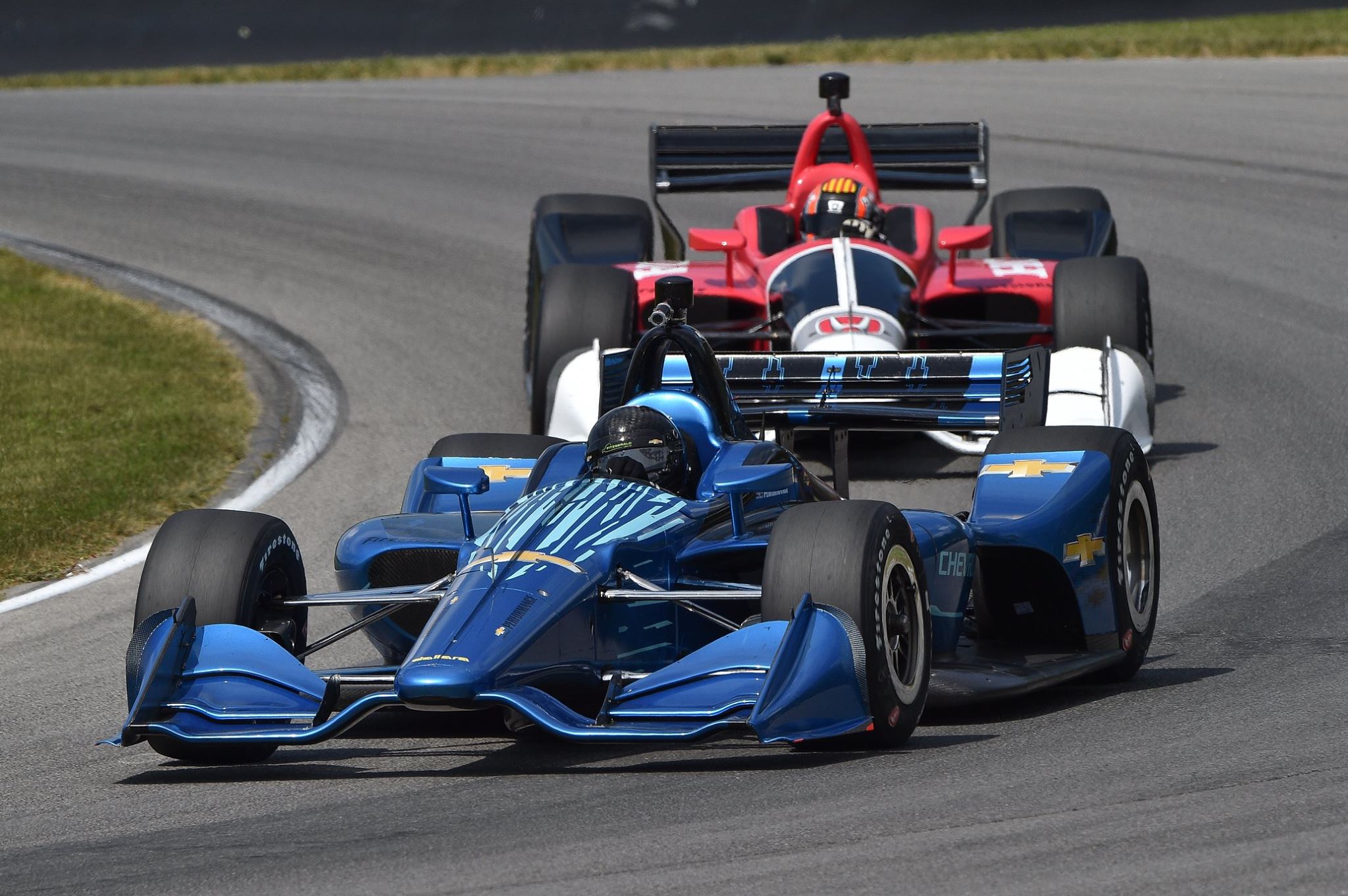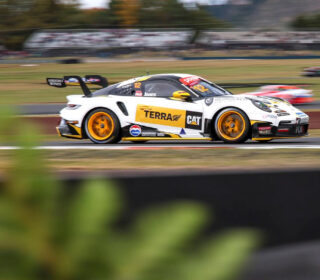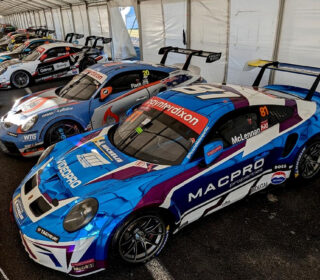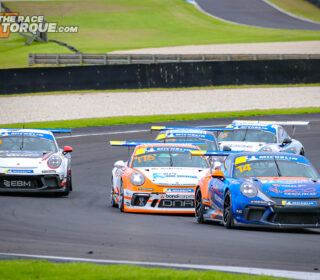ADVANTAGE: AMERICA IN BATTLE FOR HEARTS AND MINDS

IT COULD well be Advantage: America in the battle for the hearts and minds of Motorsport fans as we head towards 2018.
Smart and commonsense decision-making from the leadership of key series stateside, it must be said not traits commonly associated with category management, coupled with aesthetic and manufacturer support issues for those in Europe may end up shifting the dynamic of the sport more dramatically than people think.
In Open Wheel racing, IndyCar are in the process of rolling out arguably the most visually appealing open-wheel race car in the last two decades, while Formula 1’s fleeting relationship with fast sexy cars will last but a season before the poorly-managed public introduction of the Halo safety device that is poised to dramatically unsettle the fan base.
Meanwhile, as the World Endurance Championship stutters with the withdrawal of both Audi and Porsche within the space of twelve months – leaving their headline class with one manufacturer and the potential of a handful of privateer runners next year – IMSA’s Daytona Prototype International (DPI) formula is producing competitive racing that allows brands to inject their own IP while allowing privateers to compete on a relatively level playing field.
It is a remarkable shift in the sport that ten years ago saw both US-open wheel and sports car racing offering rival series with few key points of difference and a diminishing market share. They both now have their best ever opportunity to grow and attract new fans (and get old ones back on board) as those across the pond struggle with an unclear future direction for the sport.
The open wheel debate is perhaps the most important, given Formula One’s dominance in (especially) the European market.
The introduction of the Halo concept has been a mess; a brief public flirtation with the aero-screen concept lasting but one lap and the criticism of one former world champion before the current solution was announced by the FIA.
While no one questions the need to continually inspire safety advancements in the sport, to this fan the Halo introduction feels rushed and poorly thought out. That may not be the case behind the scenes, but some PR detailing the process might have been handy to soften the otherwise blunt introduction of this roll-cage for F1 cars.
It’s clear there is little understanding in the halls of the FIA about how this will damage the fan base, but it’s likely to have serious negative effects on the public perception of a Formula 1 car and though there’s nothing scientific about it, a random survey amongst those in the industry here generated mostly negative reviews.
While Safety is paramount, the appeal of motor racing and in Formula 1 in particular is the performance ability, aural and visual appeal of the cars.
It’s clear that if the sport did learn from the poorly received introduction of the 1.6 Turbo/hybrid era, they’ve failed to take it in.
At least in the old days the fans had fast, cool looking and visceral cars to look at / listen to if it was a bad race. Now, not only do the cars sound average, they’re going to look it as well.
Stateside, IndyCar only holds a marginal advantage over IMSA’s top series in terms of TV ratings and commercial strength (and may lag behind if not for the Indianapolis 500), but the response to the fans negative reaction to the ‘Aero Kit’ era has been swift and decisive.
Gone are the ugly cars with wing elements everywhere and in it’s place are visually stunning cars that offer a modern spin on the ‘golden era’ of the early 1990s. Not only are the cars better looking, but reduced reliance on wing-generated downforce should make for better racing, too.
A return to the glory days pre-IndyCar split may yet be a way off, but IndyCar is likely to have the most spectacular open-wheel racing product in 2018 and may well be their best ever chance to bring back fans and TV audiences.
In this case it seems as if the customer is very much right in America, while in Europe the customer will watch whatever they’re damn well told to.
This strikes me as the wrong approach.
The SportsCar debate is slightly different and is more about the structure of how the series is run, rather than the visual appeal or performance of the cars involved because even without the LMP1 cars, the World Endurance Championship grid is still quite a thing indeed.
However the traditional European model of having series almost totally supported by manufacturers is failing, while in the states the more egalitarian approach to allow manufacturers to be involved but restricting their performance to that of the fastest privateers is coming up trumps.
There’s no doubt that a fully brand-backed series at it’s prime is a sight to behold.
The BTCC of the 1990s had 10 brands throwing millions at the best cars and drivers and it was brilliant. The WRC of the same era was every bit as good if not better: Saintz, Makkinen, McRea and, later, Loeb all battling in factory-backed teams on the ragged edge.
The few recent seasons of the World Endurance Championship when Porsche, Audi and Toyota all battled for LMP1 victories by pushing the boundaries of what a combined petrol / diesel and hybrid driveline could do produced thrilling racing.
And yet, the BTCC almost died completely when a majority of the brands departed between 1998 and 2001. The WRC was the same. The DTM has lost Mercedes and needs a major re-invention to retain BMW and Audi at the same level or it faces irrelevance. The World Touring Car championship hangs by a thread on the back of brand backing from Honda and Volvo, but if you’re a privateer the only way you win is if you get lucky with a reverse grid or weight ballast break.
And now the World Endurance Championship’s top class faces the potential of surviving with only one or no competitive brands.
Like I said; when it’s good, it’s good. But when a few brands change their minds on marketing spend Motorsport is often the first thing to go and it’s the series that suffers.
What happens to Formula E should the public opinion to Electric cars change as quickly as feelings towards diesel cars has in the last five years?
Five years ago Diesel was the coming thing but one scandal from the VW group has initiated a quantum shift that has brands switching to EV development quicker than ever.
The long-sighted approach IMSA has taken has delivered a series that has attracted Nissan, GM (Cadillac) and Mazda in it’s first year with Honda to enter via Team Penske in 2018 and more brands touted.
And yet if they all pulled out tomorrow teams can go and buy a WEC-spec LMP2 car and still race for victories and the series would be fine.
As it is, up to a dozen LMP2 cars are expected to visit from Europe for Daytona and Sebring early next year which will make for a remarkable, world-class Prototype grid.
It’s the reason why GT3 racing flourishes: Honda could tip millions into their NSX Program but in the end it will only be as competitive as the next GT3 car which means I could go and buy a Ferrari 488, plug in Toni Vilander and knock them off had I a spare Million bucks or two. Progress is slow, but I’m working on it..
The BTCC is booming because of the same reasons and even if Holden and Nissan pulled out of Supercars tomorrow, we’d still have a series – the fact Prodrive Racing has continued to win since Ford’s complete withdrawal of their backing is proof positive of that.
I refuse to offer prophecies of doom for F1 or the WEC, because in the end they will adapt and people will probably continue watching.
But for the fans who watch the sport because they want close and open competition, good looking racing cars and don’t care if it’s a manufacturer or a privateer at the pointy-end or not, it’s the US of A that is looking pretty good at the moment.
And as Europe stutters, those going racing ‘stateside could be in the box seat to benefit by bringing back the fans thanks to, as simple as it sounds, having a fan-friendly product.
If only their country had the same kind of leadership..
WORDS: Richard Craill
IMAGES: INDYCAR Photo














